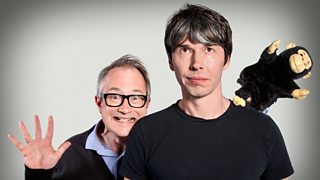GCHQ Code-breaker Challenge – the Solution
With the help of the GCHQ Puzzle Master, we set you a . Here's the solution.

THE SOLUTION
Tim said: “We need diversity of thought in the world to face the new challenges.”
Who is Tim? It is, of course, the inventor of the World Wide Web – Sir Tim Berners-Lee
HOW TO SOLVE IT
Step 1 – who are Samuel, Louis and Ludwik?
The key to unlocking the puzzle is identifying Samuel, Louis and Ludwik. In this case, we need to find a common link between them. They are all pioneers in the world of language and code:
- 1. Samuel Morse, the inventor of Morse Code
- 2. Louis Braille, who invented Braille.
- 3. Ludwik Lejzer (L.L.) Zamenhof, the creator of Esperanto, the most successful constructed language in history.
Step 2 – work backwards
With this knowledge we now know that the puzzle reads:
If Samuel Morse transcribed what Louis Braille wrote…
…and Louis Braille wrote what Ludwik Zamenhof translated…
…and Ludwik Zamenhof translated what Tim said…
…then what did Tim say?
We’re given the starting point of Samuel Morse’s translation. We therefore need to work backwards through the various translation steps to return to the source message of what Tim said.
Step 3 - what did Louis Braille write?
We know that Samuel Morse has transcribed what Louis Braille wrote. Morse designed Morse Code as a method of transmitting text information as a series of on-off tones, lights, or clicks that can be easily understood by a listener or observer without the need for special equipment. Individual letters of the alphabet are represented by a mixture of “dots” (short signals) and “dashes” (long signals). So using a chart of International Morse Code (or an online translator if you’re feeling lazy!) you need to take the seemingly random letters of Samuel’s transcription and turn it into Morse Code. One translation down - two more to go!
Step 4 – What was Ludwik Zamenhof’s translation?
We know that Louis Braille wrote what Ludwik Zamenhof translated. Braille invented the Braille writing system, which is used by blind and visually impaired people around the world to read. Braille characters are small rectangular blocks called ‘cells’ (two across, three down) that contain tiny bumps called ‘raised dots’. The number and arrangement of these dots distinguish one letter from another.
So using a Braille chart (or again, an online translator if you’re feeling lazy!) you need to convert the dashes and dots into letters of the alphabet. Dashes represent blank areas in the cells. You’ll arrive at:
Ni bezonas diverseco de penso en la mondo por alfronti la novaji defiojn**
This is Ludwik’s translation! Almost there now. Deep breath. Only one more translation to go…
Step 5 – What did Tim say?
We know that Ludwik Zamenhof translated what Tim said. Zamenhof created Esperanto, the most commonly used constructed language in the world. He believed an easy-to-learn, universal language could help eradicate war and overcome division in humanity.
This is a step where an online translator is the obvious choice. It will identify the sentence as an Esperanto translation of English:
We need diversity of thought in the world to face the new challenges
Step 6 – Who’s Tim?
A quick Google search will identify the author of the quote as Sir Tim Berners-Lee, inventor of the World Wide Web.
**NOTE: The GCHQ puzzle master would like to apologise for the error in the Esperanto translation. It should read: Ni bezonas diverseco de penso en la mondo por alfronti la novajn defiojn**
Many congratulations if you managed to solve the puzzle!
Further listening and reading on GCHQ and code-breaking
-
![]()
Did you solve the GCHQ code-breaker challenge?
Find the solution to the GCHQ code-breaker challenge.
-
![]()
The Secret History of GCHQ
How Scarborough saved the world: stories from the hidden past of the intelligence agency.
-
![]()
Who were the women who worked at Bletchley? What did they do? What became of them?
-
![]()
The Infinite Monkey Cage: GCHQ
Brian Cox and Robin Ince turn their attention to the home of modern-day cryptography and code breaking.



